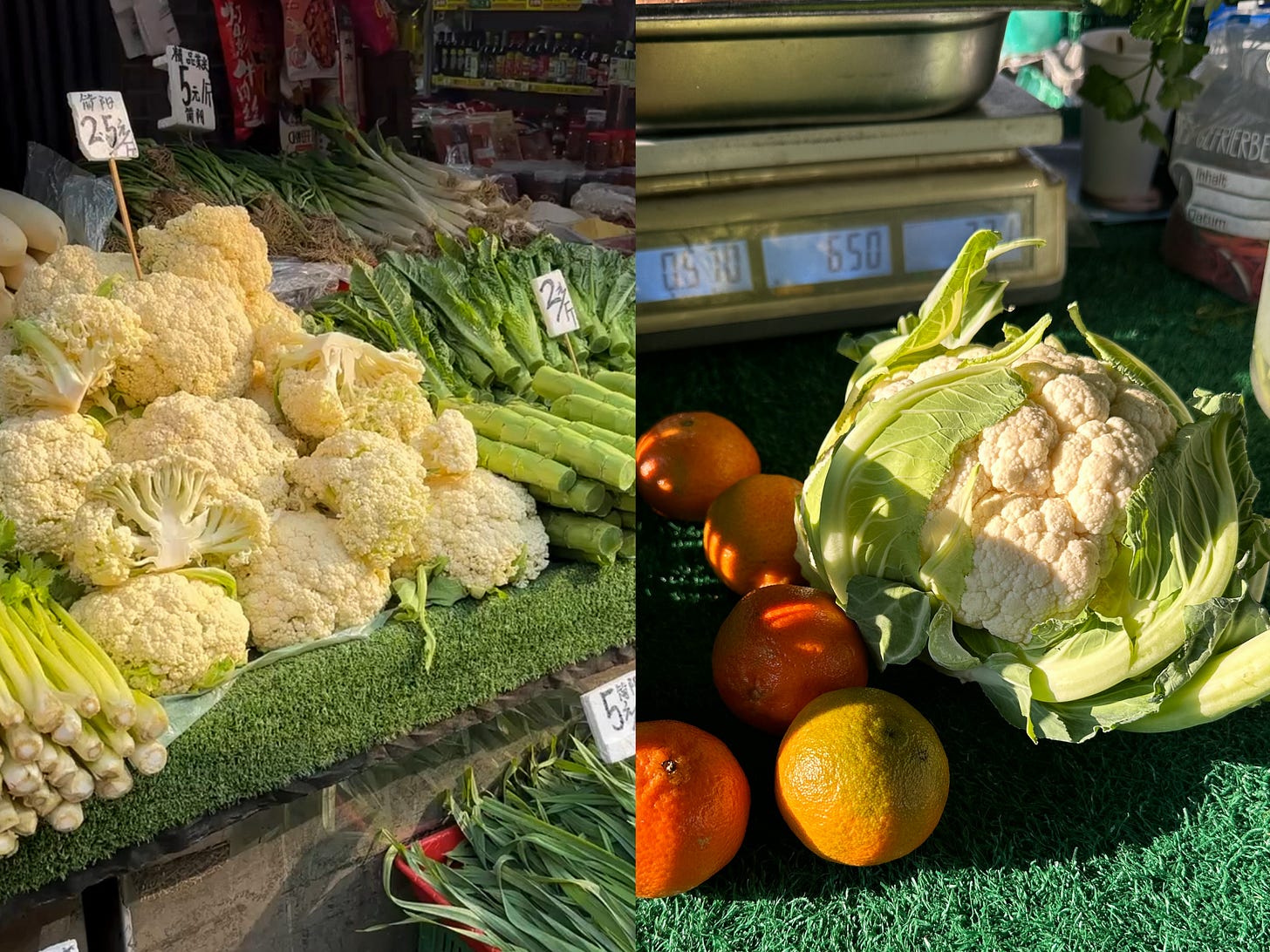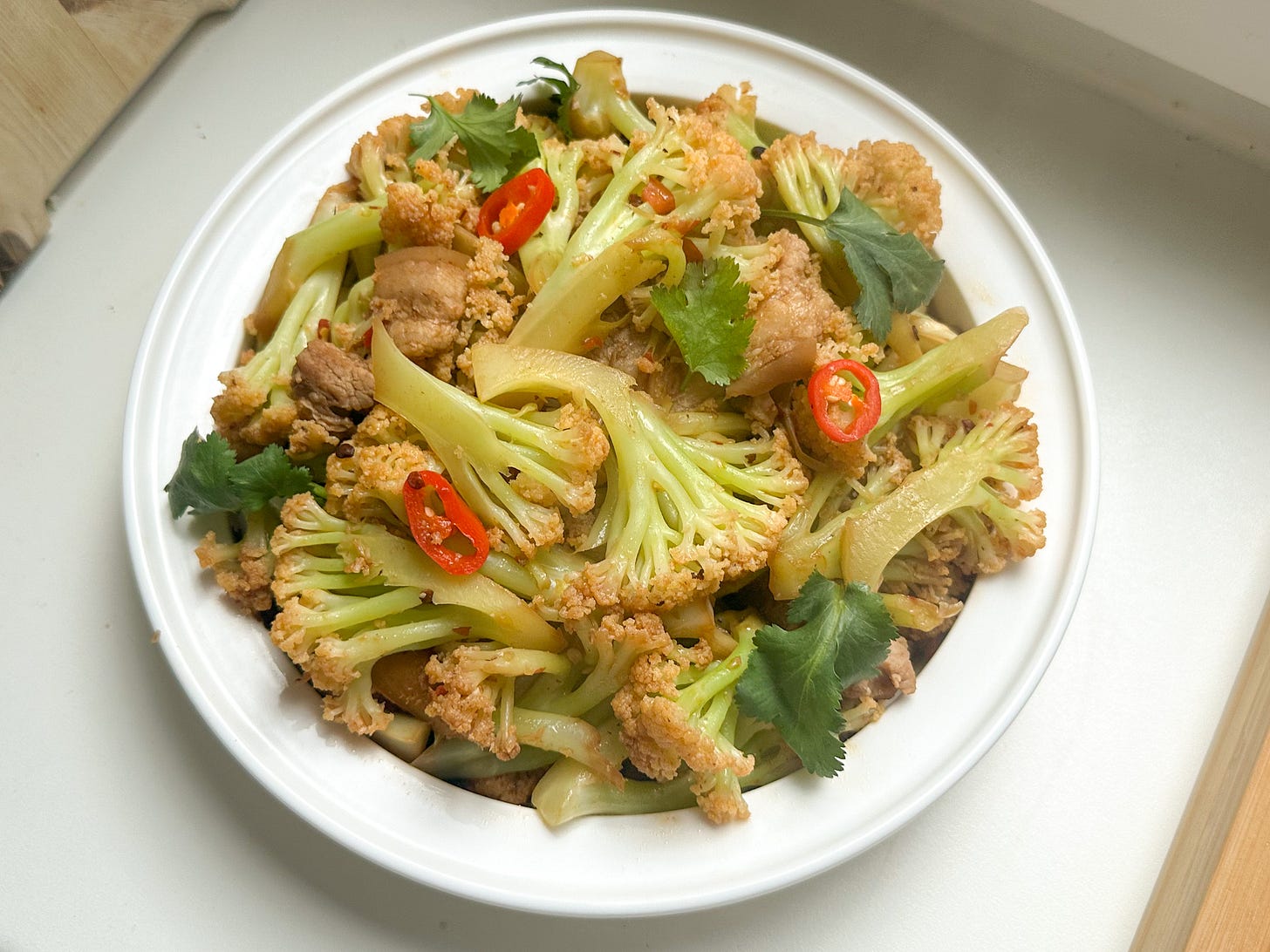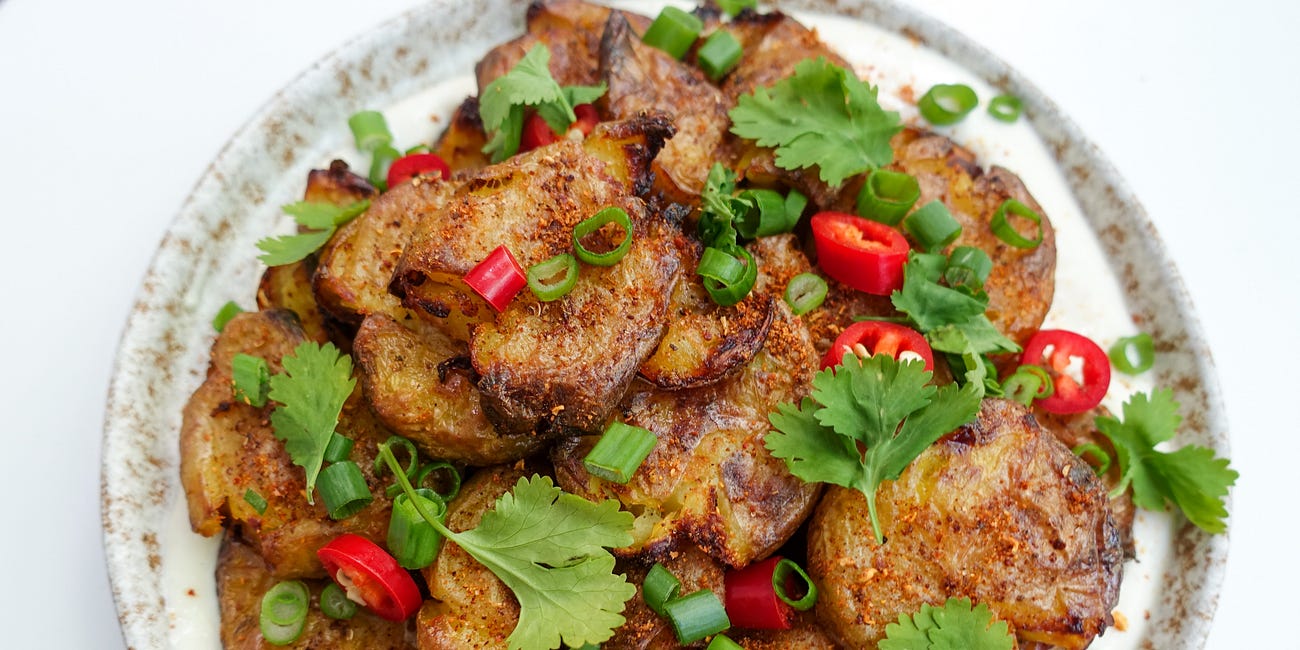The festivities are over, and I can finally shift my focus back to everyday cooking. For now, I’m giving sausage-making a break. Better late than never, I’m finally looking at my New Year’s resolutions. This year, I’ve been trying to stay more organized—bringing back an old-school editorial calendar in Google Sheets and even getting back on a project management tool, the exact same kind I once dreaded in my corporate job. Surprisingly, it’s working. Productivity is slightly up, and I have a clearer overview of content I want to publish: meat and vegetables, rice and noodles, deep dives, and practical, cookable recipes.
One of my goals this year is to explore techniques and ingredients I haven’t written about—seafood (since cooking fish isn’t exactly my strong suit), pastries, and, in this case, cauliflower. Or, as Yotam Ottolenghi recently put it, “the Jennifer Coolidge of vegetables.” Unlike him, I’ve never had a deep connection with cauliflower. It feels too big for one meal, and maybe my bias comes from memories of bland, boiled cauliflower and carrots in a German canteen. But on the flip side, it’s affordable, fiber-rich, and keeps well in the fridge—so I decided to give it a chance, but in a way that leans into more flavor.
I originally planned to make this with Chinese cauliflower. I tested the recipe in January, but sourcing this particular produce in Berlin has been hit-or-miss. In the end, I found some at the last minute, but I also wanted to make this dish more accessible, so I tested it with both Chinese and regular cauliflower, which you can find in any supermarket.
What is Dry Pot?
Dry pot (gān guō, 干锅) refers to a big wok of stir-fried ingredients—often chicken, ribs, shrimp, and vegetables—dry-tossed in a spicy, numbing mala sauce. Think of it as hot pot’s cousin: instead of simmering in broth, everything is cooked beforehand, then served with little broth.
Gan Guo became a popular communal dining dish in China, inspiring restaurants to create smaller, vegetable-focused variations like dry-pot potatoes, and cauliflower. Often found in Sichuan and Hunan restaurants, it’s typically served in a mini wok over a candle, keeping the dish warm and sizzling at the table. This technique isn’t new—its roots likely trace back to gān biān (干煸), or dry-frying, where ingredients are first par-cooked in oil to remove moisture before being tossed in a flavorful sauce. (Chinese dry-fried green beans are a well-known example.)
My take on dry-pot cauliflower is a fusion of Sichuan and Hunan influences. I use fresh chili and fermented black beans (douchi, 豆豉), a more Hunan-style touch while keeping doubanjiang, the salty-spicy bean paste essential to Sichuan dry pots. This dish is vegan but there’s an option to add some meat.
Recipe: Dry Pot Cauliflower (Ganguo Huacai,干锅花菜)
Ingredients
Servings: 2
½ head of a regular or Chinese cauliflower (weighs 450g or 1 lb)
2 tbsp vegetable oil
½ tsp kosher salt
1 small fresh chili (Thai or Spanish red chili, or substitute with 2 dried chilies)
3 cloves garlic, thinly sliced
3 slices ginger
1 tbsp Shaoxing wine
1 tsp douchi (fermented black beans)
1 tsp doubanjiang (Sichuan chili bean paste)
1 tsp light soy sauce
½ tsp white sugar
Scallion or cilantro, for garnish
Optional (Non-Vegan Version):
100 g (3.5 oz) pork belly or Chinese bacon, thinly sliced
Instructions
Remove the leaves and trim the woody ends. Halve the cauliflower, then slice through the stems into large florets, then use your hands or slice again to smaller than bite sized pieces. Rinse, drain completely, and toss with ¼ tsp salt. If any moisture is drawn out, pat dry.
Heat a wok over medium heat until hot. Add 1 tbsp oil, then the cauliflower. Stir-fry for 3-4 minutes, until the edges of cauliflower are slightly charred. Lower the heat to medium, cover with a lid, and let steam in its moisture for 4-5 minutes, stirring once. Remove and set aside.
Wipe the wok if needed, then add the remaining 1 tbsp oil. (If using pork, add pork first and fry it now for about 3 minutes until slightly browned) Reduce heat to low, then add doubanjiang and douchi. Stir-fry until fragrant and the doubanjiang releases red oil. Then add ginger and garlic slices, fry briefly until fragrant.
Return the cauliflower to the wok and toss to coat in the sauce. Splash in Shaoxing wine along the side of the wok, then season with soy sauce and sugar. Stir to combine. Add chili and quickly toss together. Taste and adjust the seasoning, adding the remaining ¼ tsp salt if needed. Garnish with scallions or cilantro. Serve hot with steamed rice.
Tips for Making Dry-Pot Cauliflower at Home
Regular vs Chinese cauliflower
Chinese cauliflower (or flowering cauliflower, Taishan cauliflower, fioretto cauliflower) has long, green stems, smaller florets, and a more delicate, naturally sweet taste. It’s crisper and ideal for quick stir-fries. If you can find it, grab it! In China, you’d actually find both varieties, but this type, known as song huacai (松花菜) is more popular in stir-fries.
Regular cauliflower has denser florets and a firmer texture, but it works well too. It gets a nice charr and soaks up the sauce beautifully. When cutting it, aim to keep the stems attached (like this video shows, to cut it from the stems instead of the florets), and extend the cooking time by 1-2 minutes.
After testing both side to side, I can say the difference isn’t make-or-break. The Chinese cauliflower is more crisp, but has more water so it doesn’t charr as well as the regular ones. Either way, the dish delivers a big flavor—and surprisingly, the leftovers hold up well, which is rare for Chinese stir-fried vegetables.
Prepare the cauliflower
The cauliflower is par-cooked before being tossed in sauce. In restaurants, they’re often deep-fried. Some home cooks blanch it instead, but I find that method strips away the essential char. So my solution is a longer pan-fry with the lid on, allowing the cauliflower to soften in its own steam—no added water needed. I also picked up a useful trick from the YouTube channel 老饭骨: salting the cauliflower before frying. This seasons it from the inside and helps draw out moisture, which speeds up the cooking in the wok and keeps the cauliflower crispy.
With or Without Meat?
At Chinese restaurants, this dish usually comes with a thinly sliced pork belly or cured pork (la rou, 腊肉). In Chinese cooking, it’s common to see vegetables stir-fried with just a touch of meat or pork fat to add more flavors—like the hand-torn cabbage I shared a few weeks ago. For omnivores, adding pork makes it a more substantial meal with rice. But even without meat, dry-pot cauliflower is still packed with layered flavor. You can serve it with other protein like a fried egg or some slices of fried tofu for a whole meal.
If you’re a visual learner, you can reference to the video below for the meat version with Chinese cauliflower. You can find the video vegan version on my Instagarm. (wow two videos for one recipe).
Another spiced vegetable dish from the archive:
Salt & Sichuan Pepper Smashed Potatoes
Hi! This week we’re cooking another dish featuring the magical Sichuan pepper. You will learn how to make a Chinese salt and pepper blend and serve it in a creative way with oven-roasted potatoes and whipped tofu. Watch me make it here!











Made this tonight. A nice dish! I've really been partial to the Chinese cauliflower this since I found it locally.
Looks delicious, and it was fun to see Chinese cauliflower!